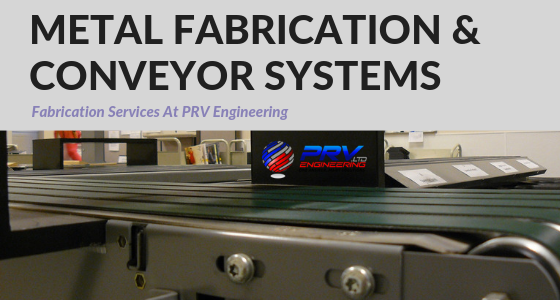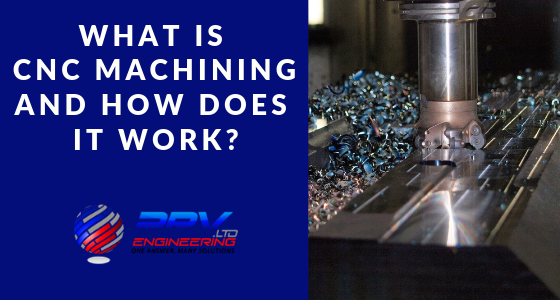Considering the exponential growth in technology across various sectors and the adoption of digital technologies, is the world ready for another radical change? This digital transformation of industries is already happening and many believe this is the Fourth Industrial Revolution.
Waterjet cutting is often used during the fabrication process of machine parts. This industrial tool is capable of cutting a wide variety of materials using a very high-pressure jet or stream of water. A mixture of water and an abrasive substance is also used in many applications. The highly versatile cutting method produces much less waste than other forms.
Waterjet cutting is also more environmentally friendly as it doesn’t produce dust, chippings or gas like other cutting methods. Engineering companies are implementing waterjet technology as a cost-effective, complementary machining method to cut parts to near-precise requirements. This greatly helps minimise waste, maximise raw material usage and accelerates overall production.
Over the next few decades, the world’s energy landscape as we know it will change dramatically. One decisive change is the ever-growing demand for power which brings about the need for new and better energy innovations.
Wherever there is an increase in access to reliable and affordable energy, people want to enjoy a higher standard of living. While that is certainly a good thing, at the same time, many of the world’s population lack access to even the most basic energy services.
For some time now, many industries have taken to Augmented Reality (AR), or at least, thought about the technology. And why not as the AR market is expected to reach $60,55 billion by 2023 as more tech giants are linked to investments pushing the growth. Some of the major players involved in Augmented Reality investments and acquisitions include Google, Apple, Facebook, Samsung and Intel.
Augmented Reality is also known as spatial computing which is rapidly growing and expanding into several business and industrial applications. Spatial computing is a broad term used to describe how humans interact with computers in the same surroundings. This means that an Augmented Reality system makes it feel as if digital media is physically present thanks to interactive design and gesture.
Metal fabrication refers to processes involving cutting, shaping or moulding a raw material (metal) into a final product. Metal components are available in a wide variety of dimensions and materials such as sheet metal, metal rods and metal bars. The metal fabrication process involves a wide range of skills and disciplines from profiling, bending and forming, cropping, coded welding to assembly and painting.
It is, without a doubt, a specialist process that requires expertly trained staff and advanced machinery. Coincidentally, those are also the two main factors to consider when looking for a trusted engineering company. While modern technology, machinery and computer aided design software have pushed fabrication services to the next level, there is no substitute for experience.
Image Credit: VA
The Directorate General of Highways commissioned the Danjiang bridge in Taipei that will span the mouth of the Tamsui River. Construction of the world’s longest single-mast, asymmetric cable-stayed bridge is already underway and is generating quite a buzz.
Designed to connect to the national highway system, the Danjiang bridge will help ease congestion on the Guandu Bridge situated further upriver. The Danjiang bridge construction will also facilitate the expansion of the Danhai Light Rail Transit which is part of the city’s public transport system.
Image Credit: BAE Systems
Over the years advances in technology and engineering have accounted for many innovations within the defence sector. Last week we looked at naval vessels and today, we focus on the Challenger 2 MK2 Black Night Battle Tanks.
The original Challenger 2 served with distinction in Bosnia, Kosovo and Iraq and now, the Ministry of Defence (MoD) has extended its service to 2035. BAE Systems have introduced the first working prototype of the Black Night upgrade to the UK’s main battle tank, Challenger 2. It features a state-of-the-art thermal imaging system and many improved defensive systems capable of challenging anything standing in its way.
Image Credit: Austel
When we look at modern naval vessels, the larger and more glamorous ships generally take centre stage including the massive aircraft carriers and the ever-dangerous nuclear submarines. However, if it weren’t for frigates, these super ships would be unable to safely take on the open oceans.
Frigates are also called the “eyes of the fleet” and serve as multi-purposed warships. Their size is essentially in-between a smaller corvette and a larger destroyer where they act independently of the fleet and can free up larger ships in medium-threat areas.
While frigates weren’t suitable to fight with the rest of the fleet in normal battles, they were the perfect solution to long-range solo missions. This included exploration, patrols, escorts, blockades, anti-piracy and anti-slavery missions among others.
The construction industry has evolved significantly and with it, many new and improved methods including steel fabrication. If you think about skyscrapers, warehouses and shopping malls, almost every aspect in construction consists of structural steel. Steel framed structures are common across many construction projects including garages, residential properties and short-term temporary structures.
Steel fabrication is used to create various components and products with different qualities for different applications. Fact is, structural steelwork has been the primary choice for most builders, engineers, contractors and structural steel fabricators. Many industries rely on steel fabrication because of the quality, reliability, flexibility, cost effectiveness and sustainability that it offers.
In today’s modern manufacturing world, not too many products are made without CNC machining. This includes the basics like toys, household appliances and machines but also cars, aeroplanes and medical devices among others. CNC machining is incredibly versatile and many industries cannot do without it.
Some of the main industries that rely heavily on CNC machining include aerospace, automotive, medical manufacturing and woodworking. Here, they use it use for various operations such as drilling and routing where the aerospace industry favours CNC machining because it offers the five-axis option when required. This functionality means they can more easily manage hard-to-cut materials such as Inconel.
In healthcare or the medical sector, CNC machining plays an essential role for micro-machining. This involves fabricating all the tiny parts made from different types of materials for various life-saving applications. Examples of CNC machined parts are pacemakers or titanium joints not to mention tools and implements for medical professionals.











Recent Comments